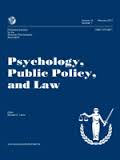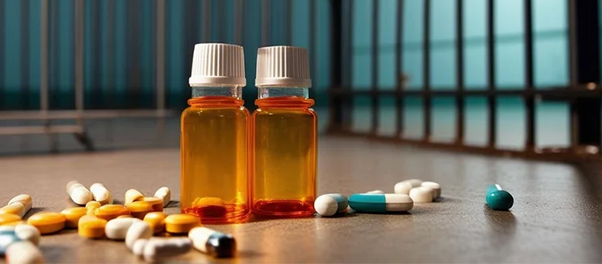 Confession evidence can trump exculpatory DNA when prosecutors present theories to reconcile the contradiction. This is the bottom line of a recently published article in Psychology, Public Policy, and Law. Below is a summary of the research and findings as well as a translation of this research into practice.
Confession evidence can trump exculpatory DNA when prosecutors present theories to reconcile the contradiction. This is the bottom line of a recently published article in Psychology, Public Policy, and Law. Below is a summary of the research and findings as well as a translation of this research into practice.

Featured Article | Psychology, Public Policy, and Law | 2016, Vol. 22, No. 2, 127-140
When Self-Report Trumps Science: Effects of Confessions, DNA, and Prosecutorial Theories on Perceptions of Guilt
Authors
Sara C. Appleby, John Jay College of Criminal Justice
Saul M. Kassin, John Jay College of Criminal Justice
Abstract
For many wrongfully convicted individuals, DNA testing presents a new and invaluable means of exoneration. In several recently documented cases, however, innocent confessors were tried and convicted despite DNA evidence that excluded them. In each of these cases, the prosecutor proposed a speculative theory to explain away the mismatched confession and exculpatory DNA. Three studies were conducted that pitted confessions against DNA test results. Study 1 showed that people in general trust DNA evidence far more than self-report, including a defendant’s confession. Using student and adult community samples, Studies 2 and 3 showed that in cases in which the defendant had confessed to police but was later exculpated by DNA, prosecutorial theories spun to reconcile the contradiction attenuated the power of exculpatory DNA, significantly increasing perceptions of the defendant’s culpability, the rate of conviction, and the self-reported influence of the confession. Implications and suggestions for reform are discussed.
Keywords
confessions, DNA evidence, false confessions, attorney arguments
Summary of the Research
“Confession evidence is so persuasive that once a suspect confesses, even if he or she immediately recants that confession, additional investigation often stops and the suspect is prosecuted and convicted. Research on the impact of confession evidence is unequivocal. Mock jury studies have shown that confessions have more impact on verdicts than do eyewitness and character testimony and that people do not adequately discount confessions— even when they were retracted and perceived to have been coerced by police, when jurors were told that the confessor suffered from psychological illness or interrogation-induced stress, and when the confession was provided not by the defendant him- or herself but by an informant who was incentivized to falsely implicate the defendant. This broad-based reliance on confession evidence at trial afflicts not only lay juries but judges as well” (p. 127-128).
“There are two reasons why people trust confessions. One is that people in general tend to trust the self-reports of others, exhibiting a “truth bias” independent of the actual veracity of a statement. This effect occurs even when there is no evidence to support the claims made within a statement and even when a statement is clearly labeled as false… A second reason why people trust confessions is that these statements often contain content cues commonly associated with truth telling…Thus confessions, though merely self-reports, often contain cues that enhance perceptions of their credibility” (p. 128).
“In recent years, advances in DNA technology have helped both to expose the reality of false confessions and to reverse wrongful convictions in rape and murder cases in which blood, semen, hair, skin, and other biological traces of the perpetrator were deposited and collected at the scene of the crime. These cases, which represent but a fraction of an unknown total, have been reported for almost a quarter of a century. Founded in 1992, the Innocence Project assists prisoners who could be proved innocent through DNA testing. To date, 330 people in the United States have been exonerated in this way, including a number who served time on death row” (p. 128).
“The persuasive power of DNA on criminal justice outcomes is also unequivocal. Surveys show that 85% of people rate DNA evidence as reliable, with 58% rating DNA as ‘very reliable;’ and 27% as ‘completely reliable.’ Additional surveys show that 89% to 93% of people believe DNA to be the most persuasive evidence of guilt. Measuring the effects of these beliefs, laboratory research shows that the presentation of incriminating DNA increases guilty verdicts more than incriminating forensic hair evidence, victim testimony, and eyewitness testimony— which led researchers to suggest that jurors use DNA as a heuristic cue when reaching their verdicts. By all accounts, DNA has become the gold standard to which other physical means of proof are compared. ” (p. 128).
“Inspired by actual events, we sought to assess people’s reactions to a rape-murder case containing contradictory self-report and DNA evidence. Specifically we sought to examine how people assess a case containing both a police-induced confession later recanted by the defendant and DNA results that excluded that same defendant as the source of semen found inside the victim. In 2010, the Center for Wrongful Convictions published a report detailing 19 known cases in which an innocent defendant had confessed to police; after which exculpatory DNA was collected, tested, and presented at trial; and the defendant was convicted anyway. Since that time, additional cases have been reported and critiqued” (p. 136).
“Previous research shows that both confessions and DNA are highly persuasive forms of incriminating evidence. Yet, little research has compared these forms of evidence in the same trial, and, when it has, the results have been mixed. Given that pretrial DNA testing of blood, hair, saliva, semen, and other biological traces is becoming increasingly commonplace, and is considered a valuable safeguard against wrongful convictions, it is important to know the extent to which confessions can trump DNA in court. Thus, we designed a series of studies to test people’s perceptions of guilt in cases where scientific evidence (in the form of DNA) and self-report (in the form of eyewitnesses and confessions) contradict each other, a contradiction sometimes accompanied by a prosecutor’s explanatory theory” (p. 136).
“The results of Study 1 showed that when contradictory self-report and DNA evidence are presented, regardless of which evidence was incriminating and which was exculpatory, participants based their decisions on the DNA evidence… In Study 1, we presented the contradictory evidence to participants without an explanation for the contradiction or argument from the attorneys, leaving the participants to resolve the evidentiary inconsistencies on their own… Study 2 was designed to replicate Study 1 and to extend it by varying the presence and absence of explanatory theories from the attorneys” (p. 132).
“Study 2 confirmed that participants overwhelmingly perceived guilt and voted for conviction when DNA tests incriminated the confessor. When DNA excluded the confessor, however, participants did not uniformly vote for acquittal. Instead, their verdicts were influenced by whether or not the prosecutor provided a theory to explain away the contradiction (i.e., that the victim had prior consensual sex with an unidentified man and that the defendant had failed to ejaculate), which yielded an increased estimate that the defendant committed the crime, greater self-reported influence of the confession, and a threefold increase in the rate of convictions—from 10% to 33%” (p. 134).
“Using only the contradictory conditions in which the defendant confessed but was later excluded by the DNA, Study 3 replicated the results of our second experiment in a sample of community adults. Once again, we found that although people overall are more likely to trust exculpatory DNA more than confessions and vote for acquittal when both forms of evidence are presented, prosecution theories that seek to explain away the exculpatory DNA increase perceptions of the defendant’s culpability and the rate of guilty verdicts. Indeed, when prosecutors offered an explanatory theory—speculating that the victim had prior consensual sex with an unidentified third party and that the defendant had failed to ejaculate—participants voted to convict 45% of the time, compared to only 15% when no theory was offered or when there was no confession. In sum, although participants viewed exculpatory DNA as persuasive proof of innocence, the prosecutor’s explanatory theory significantly attenuated this effect” (p. 136).
“In demonstrating that confessions can trump exculpatory DNA when prosecutors present theories to reconcile the contradiction, the present studies reinforce previous research showing not only that confession evidence strongly influences juries and judges, but that it is potent enough to corrupt other evidence in a case, such as the judgments of experienced polygraph examiners, eyewitnesses, and individuals judging handwriting samples, often resulting in an array of forensic confirmation biases and creating the appearance of corroboration. Apparently, under some circumstances, even exculpatory DNA cannot fully safeguard innocent suspects who confessed to crimes they did not commit” (p. 137).
Translating Research into Practice
“As a result of advances in DNA technology, which enabled the 1992 founding of the Innocence Project, 330 wrongfully convicted individuals in the U.S. have been exonerated to date and set free through new forms of DNA testing of biological materials (e.g., blood, hair, semen, skin) previously collected and preserved. DNA evidence has become the new “gold standard” in the forensic sciences and is now commonly used to exonerate innocent confessors. Our finding that laypeople can be persuaded to draw incriminating, noninnocent conclusions from exculpatory DNA results in cases involving defendants who had confessed has troubling implications for the continued use of DNA as a safeguard in cases involving confession. As such, our results reinforce the AP-LS White Paper recommendation that the video recording of the processes of interviewing and interrogation in their entirety remains an important mean of protecting innocent suspects in the interrogation room” (p. 138).
“In highlighting the power of confession evidence in court—even, at times, despite exculpatory DNA evidence—the current studies punctuate the need for two additional safeguards that would enable juries to become more critical fact finders of confessions. First, a consensus has emerged that police should be required to record the entire process of interrogation—from start to finish. These recordings will provide a more accurate factual record for judges and juries needing to assess the voluntariness and credibility of the confessions that were produced. A second means of countering the inherent power of confession evidence is to admit testimony from experts. At present, U.S. courts differ in their willingness to admit such testimony. Our studies add to the literature cited by the American Psychological Association (APA) in amicus briefs recently submitted to state supreme courts. In these briefs, APA has argued that judges and juries have difficulty assessing confession evidence; that false confessions, though counterintuitive, do occur; that scientific research on dispositional and situational risk factors is reliable; and that psychological experts would assist the trier of fact” (p. 138).
Other Interesting Tidbits for Researchers and Clinicians
“At this point, additional research is needed to address questions unanswered by our research. First, it is important to examine the influences and limitations of other more or less plausible tales spun by police, prosecutors, and post-DNA exoneration civil defendants in cases where DNA was present but excluded the confessor (e.g., in various cases, the prosecutor suggested that the victim was raped twice, by two separate sets of perpetrators; that the victim may unwittingly have come into contact with semen while playing in the woods, where couples have sex; and that pubic hairs found on the victim’s bed, which did not match the defendant, could have been left by movers who brought furniture into the bedroom a week earlier). Second, it is important to consider whether the source of a particular “confession-but-exculpatory DNA” theory moderates its persuasive effect (e.g., whether the source is not a partisan prosecutor but a judge, juror, or other neutral communicator). Third, research is needed to test the effectiveness of counterarguments that defense attorneys might use to refocus attention on the raw data provided by the DNA tests. In the current studies, the defense argued that the confession was coerced, but it did not critique the prosecutor’s theory concerning the exculpatory DNA (e.g., by explaining the law of parsimony, i.e., the scientific principle that the best explanation requires the fewest assumptions)” (p. 138).
Join the Discussion
As always, please join the discussion below if you have thoughts or comments to add!





















